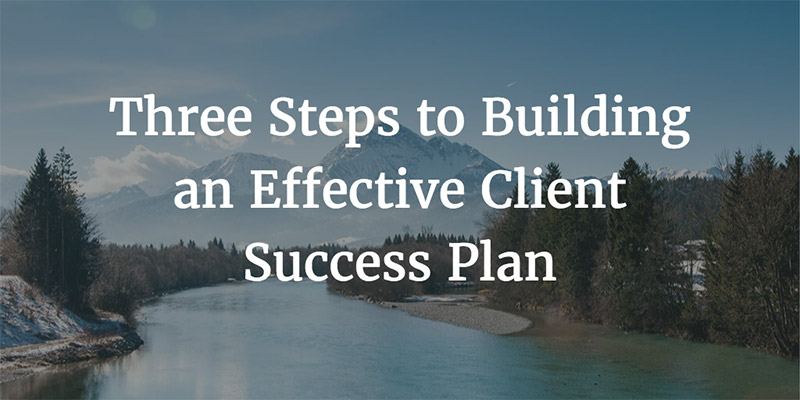Client Success is much more than ensuring a customer’s successful installation or configuration of your product and much more than offering high quality training and support. Client Success is about helping an organization drive change through your products or services.
You can provide a perfect customer onboarding experience with seamless setup and great training; the customer can absolutely LOVE your product or service; there can be a 100% adoption rate and you can still lose the customer. It happens across industries all the time. Why?
It happens because decision-makers and key stakeholders are unable to see the benefits of using the products or services in which they’ve invested. When they can’t see the value, they can’t justify spending money on it.
You need to establish clear goals, objectives, and strategies/tactics to establish value and communicate it to your clients.
Goals
In order to help drive change and ensure success, you need to know your client’s expectations.
What does the client expect to gain from purchasing your product or service?
What does the client consider to be success?
These expectations will help you and your clients establish clear goals. Though often collected during the sales process, it’s important for you to reaffirm this with clients and note them in your customer records.
At MapAnything, our customers’ goals vary: increase sales, boost field sales or service productivity, improve marketing campaigns, cut transportation costs, and more. Our Client Success Managers understand their customers’ goals and all activities – installation & configuration, training, check ins, etc. – are framed around those goals. This enables us to offer world-class service and support that is customer-centric so we can drive user adoption and avoid churn.
Objectives
Once you have a thorough understanding of the client’s goals, you need to know how they will measure these goals and set benchmarks.
How will the client track what is gained from purchasing your product or service?
How will the client measure success?
Without setting quantifiable or tangible objectives, it’s difficult, if not impossible, to know whether or not clients are on track to meet their goals. Keep in mind, the more subjective the measures, the more subjective the evaluation process. While we want customers to enjoy and feel good about using our products or services, we also want them to know that it’s working and that they’re getting the results they need. This is important for the evaluation process when the client decides whether or not to continue using your product or service.
At MapAnything, our customers’ goals are usually increase sales or boost field sales or service productivity. We help them set measurable objectives to achieve these goals. They set objectives such as “increase sales meetings by 25%” or “increase selling time and decrease drive time.” These objectives are quantifiable and can be tracked to help them measure success.
Strategies & Tactics
After setting objectives, the next step is to help your client make a plan to use your product or service to meet the objectives.
Who will use the product or service?
Which product features or areas of service will be used?
It’s important to know who in the organization will be using the product or service – it may not be the key decision-maker or technical professional with whom you’ve been speaking. The users will need to be trained, especially on the product features or areas of service that are key to meeting the company’s objectives.
At MapAnything, after we install and configure the product and after we set the goals and objectives with decision-makers and key stakeholders, we train all of the end users. We do this through custom training sessions for individual companies and through weekly training course through MapAnything University. We ensure that all end users know how to use and understand the benefits of the primary product features that will help them meet their objectives.
For example, to help them increase their sales meetings by 25% and increase selling time and decrease drive time, we’ll teach them how to build and optimize daily routes, find nearby customers to add to routes, and self-source leads. These strategies drive the change that helps the company meet its goals and objectives.
Summary
Those three steps are critical to building an effective client success plan. It’s important to understand customer goals so you can help them measure outcomes through objectives and train them on the strategies and tactics needed to meet those objectives. This customer-centric and data-driven approach requires collaboration between Sales and Client Success to understand customer goals, adding goals and objectives to customer records, and offering flexible training options. With these in place, you will retain more customers, build better relationships, and be in a better position to sell to the customer in the future.
MapAnything
That’s what we do at MapAnything; we take a data-driven and customer-centric approach to Client Success. That’s why we have nearly 300 5-star reviews on the Salesforce AppExchange and why over 70% of them mention our Client Success team. Combined with our amazing products and world-class Sales team, we’re helping over 1,000 customers worldwide meet their goals.
For more information on how your business can improve Client Success, contact me at vpope@mapanything.com.
For more information on how we can help your business meet its goals, contact MapAnything today!
